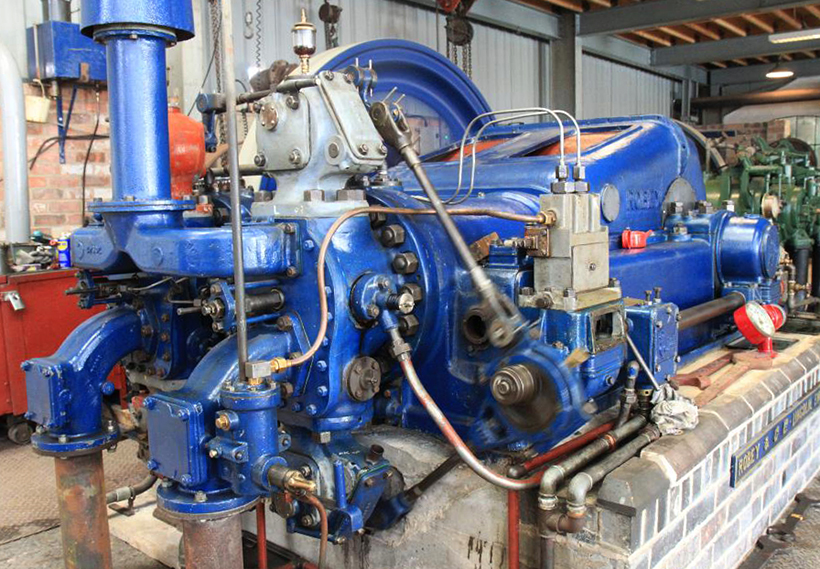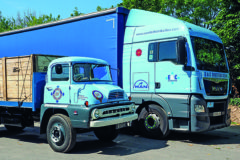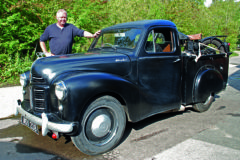A stationary engine treat
Posted by Chris Graham on 20th August 2020
Alan and Lynne Cullen reflect on a stationary engine treat to be found in the wonderful Butterley Museum, Derbyshire

A stationary engine treat: Looking resplendent in its blue livery, this Robey type HDO22 was supplied new in August 1933 to the Avon Flour Mills in Pershore, Worcestershire.
Having accompanied members of the Sussex & Kent Weald Stationary Engine Group on a winter coach trip to Butterley Museum’s most excellent collection of stationary engines in October last year, Lynne and I decided that we would like to make a ‘private’ return visit to soak up more of the atmosphere that Edmund Foden and his colleagues have created, and to see what progress had made during the winter period.
It was our intention to provide Stationary Engine magazine with something a little more in-depth about what’s possibly unique in the UK preservation world; that being four twin-cylinder oil engines in one collection. Our visit was planned for the Easter weekend, 2020, however, due to circumstances beyond our control, this simply wasn’t possible. So, what follows has been compiled from photographs and data recorded on our previous visit, together with information provided by Edmund Foden, our contact at the museum.
Firstly, there’s the impressive Robey type HDO22. It was supplied new in August 1933 to the Avon Flour Mills in Pershore, Worcestershire, where it powered the mill in conjunction with a water turbine until 1976 when, sadly, the Mill burned down. The engine then sat outside, exposed to the elements, until it was purchased for preservation in 1999. Restoration of the engine took 20 years to complete, bringing it into the condition we see today. The renovation work involved making numerous new parts, and refurbishing others that had been damaged in the fire, in the subsequent demolition of the mill and during all those years it had sat outside.
The second engine is a ‘Spring Injection’ Blackstone-type PSKT, rated 110hp at 300rpm, and which dates from 1938. The history of this engine is a little sketchy; it’s believed to have come to the Butterley Museum from a rural museum located in the Loughborough area.

Can anyone help with information about this ‘Spring Injection’ Blackstone’s early history?

Another view of the Blackstone.
The third engine is a very impressive Ruston Class 9XHRCG, serial number 335693, rated at 140hp on diesel oil, or 118 when set to operate on gas.

Edmund Foden is seen here starting the Ruston Class 9XHRCG engine.

Another view of the Ruston.
However, for me, the star of the show was the 90hp Petter Atomic two-stroke diesel engine, serial number 208429, complete with alternator. It is believed to have been supplied new in 1933 to Parkway Co Ltd (Foundry), in Belper, Derbyshire, where it powered a ‘blast fan’ in a furnace. It remained in service until the mid-1950s, and then stood idle until 1980 when it was rescued for preservation. I think you’ll agree that it’s a fine example of the engineering produced by the Yeovil-based company.

This 90hp Petter Atomic engine and alternator weighs-in at seven tons.
For a money-saving subscription to Stationary Engine magazine, simply click here





